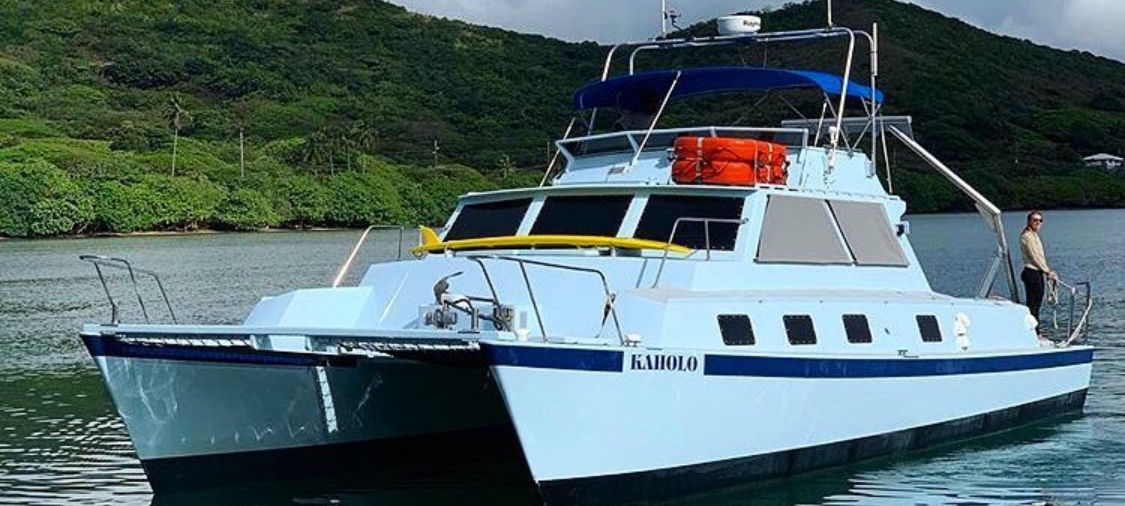
Research Vessel Kaholo
The Kaholo is a 42 ft. x 20 ft. twin diesel power catamaran. She was originally built in Honolulu in 1983 as a dive boat off of the Kona Coast. The company operating her was in financial trouble by 1990, and Hawaii Loa College bought her in 1991. Patty, Brian Quinn, and Varis Grundmanis, Ph.D. went to Kona and brought her back to Oahu to be used as Hawaii Loa’s research vessel. When Hawaii Loa College was merged with HPU in 1992, Kaholo became HPU’s research vessel. She has operated in her current capacity continuously for 25 years, logging thousands of days at sea.
Built For Research, Exploration and Education
The Kaholo was acquired by the university as vessel for science. She voyaged to her home port in Kaneohe Bay to be used and cherished for many generations of students, academics and professors all alike interested in the pursuit of ocean research. Kaholo houses several oceanographic and marine research instruments. The following is a list of the most commonly used instruments and their function.
-
CTD: The CTD measures conductivity (salinity), temperature, and depth (using pressure). Our CTD is also outfitted with a pH probe and a fluorimeter, which is used to measure the chlorophyll concentration in the water column.
-
ADCP: The Acoustic Doppler current profiler (ADCP) measures water current direction and speed using the Doppler effect of sound waves scattered back from particles within the water column.
-
“HOLEY-SOCK” CURRENT DROGUE SYSTEM: The “holey-sock” current drogue system is a ‘low-tech’ way of doing the same thing as the ADCP. The drogues are dropped at varying depths (surface, 10 meters, 20 meters, 30 meters, etc.) while offshore. By tracking and tracing their movement over a timed interval, we are able to derive physical oceanographic data such as speed and direction of current as well as movement of surface current, subsurface current and water movement.
-
PLANKTON NETS: These nets which vary in micron net drag are commonly used to collect plankton samples. Once the net is situated at the current place and depth (surface or subsurface) the time is recorded and the tow begins. Using this method, the area of collection using the dimensions of the net can be used to calculate total area covered. This sample collects a sample of plankton for further biodiversity assays.
-
BOX CORER, VAN VEEN GRAB, AND MINI MULTICORER: These are all sediment sampling devices that collect sediment from the sea floor. By inspecting the sediment once it is on board, animals living in the sediment can be counted, identified, taken back to the lab or released. The mini multicorer shows the accumulation of sand/silt at the sample site. This sort of preserved column of a sample can show scientists the distribution of sediment through a vertical layer of the sea floor as well as the thickness, and sediment type.
-
NISKIN BOTTLES: Niskin bottles collect sea water by closing the top and bottom of the bottles. They are hung from the winch wire as they deployed offboard. Each niskin bottle is attached at specific distances apart from one another in order to collect uncontaminated water samples at several depths. These water samples can then be brought back to the lab and tested for water quality parameters such as pH, dissolved oxygen, nitrates, phosphates, salinity, and more.

